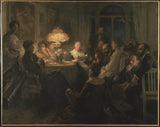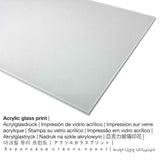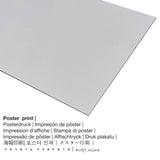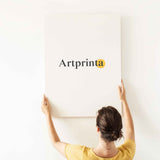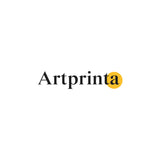Hanna Hirša-Pauli, 1900. gads - Draugi - tēlotājas mākslas apdruka
PVN iekļauts. Piegāde aprēķināta Pie izrakstīšanās
Oriģināls mākslas darbu apraksts no muzeja (© - Stokholmas Nacionālais muzejs - Nacionālais muzejs Stokholmā)
English: In the large drawing room, which is suffused with a warm light and a contemplative atmosphere, a group of people have gathered. Centre-stage, in the light of the evening lamp, sits Ellen Key, reading to her friends. In the twilight, they have all come to the home of the Pauli family at Bellmansgatan 6 in Södermalm, Stockholm. The painting can be seen as a monument to the meaning of friendship and at the same time as an element in the launch of a new cultural elite. Hanna Hirsch-Pauli sits as an observer in her own drawing room, pen and pad in hand, watching her friends. She has presented them as a close-knit circle, but with each person characterised individually. Initially it was some of the women who were socialising, but the group later expanded to include Hanna and Georg Pauli’s artist friends from their Royal Academy days and their time in Paris as well as others from the art colonies in Barbizon and Gréz-sur-Loing. The names of the Friends illustrate how closely the new cultural elite of the time was connected with the financial elite. In the late 1870s, Ellen Key had given private lessons to a group of upper middle class girls from Stockholm’s Jewish community. Three of them are depicted in Friends, at the table by Ellen Key, whom they saw as something of a mentor when it came to their intellectual, social and emotional development. Ellen Key was a philosopher and one of Sweden’s more controversial and well known cultural figures. Her thoughts on love, parenting, marriage and sexuality influenced generations around the turn of the 20th century. Ellen Key sought to break down the divide between private and public life. She felt that the home should be a model for the whole of society. She sought to politicise the home and family relations through books such as Beauty for All, 1899 and The Century of the Child, 1901. Caption: From left: the artist’s sister Betty Hirsch, actress Olga Björkegren, Lisen Bonnier, artist Nanna Sohlman Bendixson, Ellen Key, Hanna Hirsch-Pauli, Gerda Berg and the artist Richard Berg, publisher Karl Otto Bonnier, artist Georg Pauli, educationalist and writer Artur Bendixson and author Klas Fåhreus (plus unknown figure in the window.) I det stora vardagsrummet, som är fyllt av ett varmt ljus och en kontemplativ stämning, är en grupp människor samlade till högläsning. Centralt placerad i bilden, i aftonlampans sken, sitter Ellen Key och läser högt för sina vänner i Sällskapet Juntan. I skymningen har de alla samlats hemma hos familjen Pauli på Bellmansgatan 6 på Söder i Stockholm. Målningen skall ses både som ett monument över vänskapens betydelse och samtidigt som en del i lanserandet av en ny kulturelit. Som observatör i sitt eget vardagsrum sitter konstnären själv, Hanna Pauli, med penna och teckningsblock tillhands och iakttar sina vänner. Hon har framställt dem som en krets, en bild av förtätad gemenskap, men där varje individ är enskilt karakteriserad. Från början var det några av kvinnorna som umgicks med varandra men sedan utökades gruppen med Hanna och Georg Paulis konstnärskamrater från akademitiden och från Parisåren, andra från konstnärskolonierna i Barbizon och Gréz-sur-Loing. Namnen på Juntans medlemmar illustrerar hur nära tidens nya kulturelit var lierad med finanseliten. Ellen Key hade i slutet av 1870-talet gett privatundervisning åt en grupp högborgerliga flickor ur den judiska Stockholmskretsen. Tre av dem finns med i Vänner, i kretsen runt bordet kring Ellen Key och för dem framstod hon som något av en förlösare när det gällde deras intellektuella, sociala och emotionella utveckling. Ellen Key var filosof och en av Sveriges mer stridbara och berömda kulturpersonligheter. Hennes tankar om kärlek, barnuppfostran, äktenskap och sexualitet formade generationer kring sekelskiftet 1900. Ellen Key sökte överskrida gränsen mellan det privata och det offentliga livet. Hon menade att hemmet skulle vara en modell för hela samhället. Hon sökte politisera hem och familjerelationer genom skrifter som Skönhet för alla (1899) och Barnets århundrade (1901).
Artikāla pamatinformācija
| Mākslas darba nosaukums: | "Draugi" |
| Klasifikācija: | glezna |
| Vispārīgs termins: | modernā māksla |
| Mākslas darbu gadsimts: | 20th gadsimts |
| Izveidots gadā: | 1900 |
| Mākslas darba vecums: | vairāk nekā 120 gadus |
| Oriģinālais izmērs: | Augstums: 204 cm (80,3 ″); Platums: 260 cm (102,3 ″) Ierāmēts: Augstums: 237 cm (93,3 ″); Platums: 294 cm (115,7 ″); Dziļums: 8 cm (3,1 ″) |
| Izstādīts: | Nacionālais muzejs Stokholmā |
| Muzeja atrašanās vieta: | Stokholma, Stokholmas apriņķis, Zviedrija |
| Tīmekļa vietne: | Nacionālais muzejs Stokholmā |
| Mākslas darba licences tips: | publiski |
| Pieklājīgi no: | Stokholmas Nacionālais muzejs un Wikimedia Commons |
Mākslinieks
| Mākslinieka vārds: | Hanna Hirša-Pauli |
| Pilsonība: | zviedru |
| Mākslinieka profesijas: | gleznotājs |
| Valsts: | Zviedrija |
| Mākslinieka klasifikācija: | mūsdienu mākslinieks |
| Mūžs: | 76 gadiem |
| Dzimis gadā: | 1864 |
| Dzimšanas pilsēta: | Stokholma |
| Nāves gads: | 1940 |
| Miris (vietā): | Saltsjö-Storängen |
Strukturēta raksta informācija
| Izstrādājuma tips: | mākslas reprodukcija |
| Reprodukcijas metode: | digitālā reproducēšana |
| Ražošanas tehnika: | digitālā druka |
| Produkta izcelsme: | Vācu ražots |
| Krājumu veids: | pēc pieprasījuma |
| Paredzētais produkta lietojums: | sienas attēls, mājas dekors |
| Attēla izlīdzināšana: | ainavas formāts |
| Attēla malu attiecība: | (garums: platums) 1.2: 1 |
| Attēla attiecības interpretācija: | garums ir par 20% garāks nekā platums |
| Pieejamie varianti: | metāla apdruka (alumīnija dibons), audekla apdruka, akrila stikla apdruka (ar īsta stikla pārklājumu), plakāta apdare (audekla papīrs) |
| Audekla drukas (audekls uz nestuvju rāmja) varianti: | 60x50cm - 24x20 ", 120x100cm - 47x39", 180x150cm - 71x59 " |
| Akrila stikla apdrukas (ar īstu stikla pārklājumu) izmēru varianti: | 60x50cm - 24x20 ", 120x100cm - 47x39", 180x150cm - 71x59 " |
| Plakātu druka (audekla papīrs): | 60x50cm - 24x20 ", 120x100cm - 47x39" |
| Alumīnija apdruka: | 60x50cm - 24x20 ", 120x100cm - 47x39" |
| Rāmis: | nav pieejams |
Izvēlieties produkta materiālu
Katrai mākslas drukai mēs piedāvājam dažādu materiālu un izmēru klāstu. Lai perfekti atbilstu jūsu personīgajām prasībām, varat izvēlēties kādu no šīm produktu pielāgošanas iespējām:
- Plakāts (audekla materiāls): Jūsu darbs IR Klientu apkalpošana Artprinta poster is a printed cotton canvas with a slight surface structure. Please bear in mind, that depending on the absolute size of the poster we add a white margin of something between 2-6cm round about the print, which facilitates the framing with your custom frame.
- Akrila stikla apdruka (ar īstu stikla pārklājumu): The acrylic glass print, often described as a UV print on plexiglass, changes an artwork into gorgeous wall décor. Besides, it forms a viable alternative option to dibond or canvas prints.
- Audekls: The canvas direct print is a printed canvas stretched on a wooden stretcher. A canvas print of this masterpiece will allow you to transform your into a large size artwork. A canvas print has the advantage of being low in weight, which means that it is quite simple to hang up your Canvas print without the help of additional wall-mounts. Because of thatcanvas prints are suited for all kinds of walls.
- Alumīnija dibondraksts: These are metal prints on aluminium dibond material with an impressive effect of depth - for a modern look and non-reflective surface structure. The bright sections of the original artwork shine with a silk gloss, however without the glare.
Jūsu personīgais mākslas produkts
In 1900 o zviedru gleznotājs Hanna Hirša-Pauli padarīja šo modernā māksla mākslas darbs draugi. Oriģinālam ir izmērs Augstums: 204 cm (80,3 ″); Platums: 260 cm (102,3 ″) Ierāmēts: Augstums: 237 cm (93,3 ″); Platums: 294 cm (115,7 ″); Dziļums: 8 cm (3,1 ″). Artis ir iekļauts digitālajā kolekcijā Nacionālais muzejs Stokholmā, which is Sweden's museum of art and design, a Swedish government authority with a mandatet o preserve cultural heritage and promote art, interest in art and knowledge of art. This masterpiece, which belongs to the public domain is being included with courtesy of Stokholmas Nacionālais muzejs un Wikimedia Commons.Creditline of the artwork: . In addition to that, the alignment is landscape with a side ratio of 1.2 : 1, which implies that garums ir par 20% garāks nekā platums.
Svarīga piezīme: We try to describe the products as accurately as possible and to illustrate them visually on the product detail pages. Nevertheless, the pigments of the printing material, as well as the imprint might differ slightly from the presentation on the screen. Depending on your settings of your screen and the nature of the surface, not all colors are printed as realisitcally as the digital version on this website. Since the art reproductions are printed and processed manually, there may as well be slight differences in the size and exact position of the motif.
© aizsargāts ar autortiesībām - Artprinta (www.artprinta.com)

